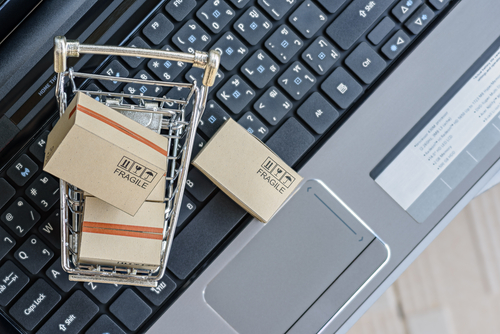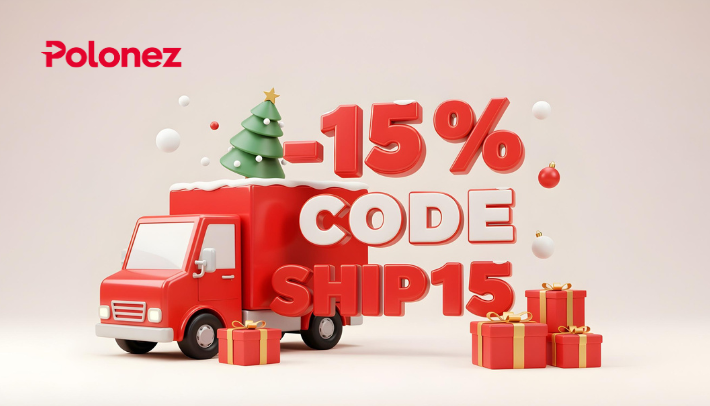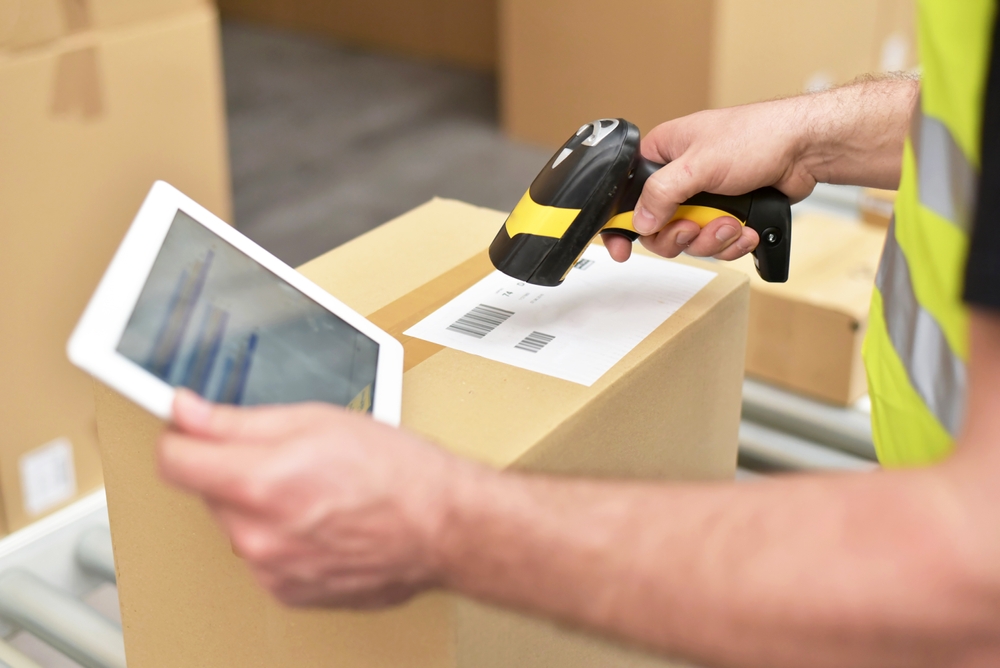May 12, 2025
US to Poland Shipping Cost: Stay Globally Aware Today

Planning your US to Poland shipping cost saves both money and stress. Transit times vary a lot across the Atlantic, so early arrangements matter.
If you don't need a whole shipping container, consider LCL shipping, which stands for Less than Container Load shipping. This lets you group your shipment with others heading to Poland, which cuts costs fast, and it also simplifies the process for everyone.
Using the latest tech can give your business a real edge. Digital supply chain shipping tools let you check prices from many carriers in seconds. You always get the best deal that fits your needs, as these platforms handle paperwork faster and help you cut down on mistakes.
Tracking your shipment in real time becomes simple, and support is available whenever you need help sorting out tricky shipping questions. Adopting these tools means you know exactly where your goods are and you make quicker decisions.
Your shipping process becomes smoother, cheaper, and easier to manage.
Packaging, Negotiation, and US to Poland Shipping Cost Awareness
Smaller packages can save money fast when you consider today’s US to Poland shipping cost. Choosing lighter packaging, like recycled cardboard or air cushions, cuts down on expenses.
These choices keep your products safe too. Packing several products in one box keeps space tight, leaving less room for waste.
This simple move trims expenses without much effort, helping you in working with shipping companies. Big shippers often get better rates after having a conversation or bringing in deal experts.
For instance, certain online digital platforms can lock-in deep discounts for customers sending boxes to Poland. Some small businesses see up to 50, 60, 70 percent or more off regular shipping rates. Real stories from companies show that clever deals sometimes uncover huge savings that nobody expects.
Rules and markets can change overnight, though. Sticking to updates helps you act fast and dodge surprises in United States-to-Poland shipping. Make sure you stay sharp to protect your profits and keep your business steady.
A recent Savills report suggests that Poland is poised to become a significant player in the industrial and logistics sector, largely due to a surprisingly limited supply of development land. The country's strategic location between Western and Eastern Europe, strong economic growth, and favorable business environment make it an appealing hub for multinational companies and e-commerce distribution.
Ongoing infrastructure improvements, particularly along the Baltic Sea, are also boosting its attractiveness to investors. Despite a recent dip in market activity, Poland continues to hold a substantial share of the European market, supported by strong foreign direct investment.
“Poland is now the fourth largest logistics market on the continent, with only Germany, the Netherlands and the UK transacting more warehouse space since 2012,” states Savills. “Positioned between western Europe’s developed markets and eastern Europe’s emerging economies, Poland offers a compelling investment opportunity due to its strategic location, robust economic growth and favourable business environment.”
This has cost-awareness implications for any individual or business shipping to Poland.
Air Freight: The Imperative of Speed in an Interconnected World
Air versus ocean freight really comes down to how fast you need the goods and how much US to Poland shipping cost you're willing to pay. If the items are valuable or needed yesterday, it makes sense to move them by air.
Most shipments get where they need to be within 3 - 7 days. If you're lucky to have a direct flight, like from Chicago to Warsaw, it might be even quicker.
Airlines sometimes tuck cargo beneath seats, sharing space with passenger bags. This “belly cargo” approach lowers costs and gives more options for last-minute shipments. Smaller boxes or lightweight parcels benefit the most.
Big, heavy shipments often need their own cargo-only flights but these run less frequently. One or two trips a week isn’t unusual for some spots in Poland, which means your package might wait longer before it even takes off.
Using the U.S. Transportation Security Administration’s (TSA) Known Shipper Management System program makes the process smoother. It can open up more flights, often drops the price, and speeds up customs. Less paperwork and fewer difficulties are always welcome.
Ocean Freight and US to Poland Shipping Cost: The Economical Route
Ocean freight moves much slower than air shipping, as many US to Poland shipping cost experts will tell you. You can expect shipments to Poland by sea to take between 20 and 40 days. From the U.S. East Coast specifically, port-to-port transit runs about 21 to 25 days.
There’s no direct ocean route from America to Poland. All cargo goes through big European ports like Hamburg, Bremerhaven, or Rotterdam first. Large ships arrive at these hubs, then smaller feeder vessels handle the final trip across the Baltic to Polish ports such as Gdańsk or Gdynia.
That extra step means more chances for delays. Every transfer is one more spot where things can slow down. Still, this is the normal way things work for most Polish imports.
These big European ports are set up to handle massive amounts of cargo. They keep things moving, even if it takes a bit longer. Direct routes just don’t exist for this trade lane.
Shipping by sea costs less for bulky or slow-moving inventory. However, planning is key. The extra handling and stops can stretch out delivery times.
It makes sense for many businesses but definitely needs careful schedule planning.
Frequently Asked Questions and Nuances
Understanding the following nuances is the key to planning and managing expectations for ocean-bound cargo:
|
Question |
Answer |
|
What is the primary difference in cost between air and ocean freight to Poland? |
Ocean freight is significantly more economical, often 5 to 10 times cheaper than air freight. A small commercial parcel costing around $20-$80 by air might cost a fraction of that by sea, though sea shipping often has higher minimum chargeable weights. |
|
How long does it typically take for commercial parcels to reach Poland from the U.S.? |
Air freight typically takes 3-7 days, including customs and handling, with expedited options as fast as 3-5 days. Ocean freight generally takes 20-40 days, with port-to-port transit from the U.S. East Coast to Poland often around 21-25 days. |
|
Are there direct ocean freight services from the U.S. to Poland? |
No, there are no direct ocean freight services. Transatlantic shipments typically go to major European ports like Hamburg or Rotterdam and are then transloaded onto "feeder" vessels for the final leg to Polish ports like Gdańsk or Gdynia. |
|
What are the main factors that increase shipping costs beyond the base rate? |
Beyond the base rate, costs are significantly impacted by fuel surcharges, security surcharges, terminal handling charges, airport transfers, customs duties and taxes (VAT), and various additional handling surcharges for non-standard or non-stackable packages. New processing fees are also being introduced. |
|
What is the duty-free limit for parcels entering Poland from the U.S.? |
The duty-free import limit for parcels into Poland is €45. If the parcel's value exceeds this amount, the recipient is responsible for paying customs duties and taxes. |
|
Why is accurate HS code classification so important for shipments to Poland? |
Accurate Harmonized System (HS) code classification is crucial because it directly determines the applicable duty rate and VAT. Errors can lead to customs delays, overpayment of duties, or penalties, especially since the last four digits of U.S. and Polish/EU HS codes may require manual fine-tuning. |
|
When should a business consider using a freight forwarder? |
Freight forwarders are highly recommended for small to medium-sized businesses, as they coordinate and manage every stage of the shipment, including ground transport, main carriage, and customs clearance. They can also often secure better rates through consolidation. |
|
Is cargo insurance necessary for international shipments? |
Yes, cargo insurance is highly recommended. It protects against financial losses from damage, loss, or theft during transit, as carriers often have limited liability for events outside their control and national/international regulations limit their responsibility. |
|
What role do bonded warehouses play in Poland for U.S. imports? |
Bonded warehouses in Poland allow businesses to defer duties and taxes while storing goods under customs control. This provides significant cash flow benefits and logistical flexibility, as duties are only paid when goods are officially cleared into Polish commerce or re-exported. |
Supply Chains, Diversification, and US to Poland Shipping Cost
Things can feel shaky across the globe these days for many considering US to Poland shipping cost limitations and opportunities. Building supply chains that can stand up to sudden changes isn't just a nice-to-have anymore — it's now a survival move. Political clashes and tough trade rules are changing how goods move.
Moving products has turned into a high-stakes game. Companies should treat constant uncertainty as the new normal. Regular tests on how operations hold up during shocks like sanctions or border shutdowns are now extremely important.
Forward-thinking firms spread their transport bets widely, using inland hubs, trains, and flexible freight centers. This kind of setup can save the day if a usual shipping route gets blocked. Relying on several ways to move goods cuts carbon footprints too.
Take Rotterdam, for instance. Less U.S. cargo has actually worked out well as new business has rolled in from other directions.
Taking risks seriously isn’t optional anymore. Volatility isn’t going away, with logistics strategies having to grow broad and tough, especially for those dealing in complex or rush orders.
Sometimes, delays hit. Costs go up. The smart move is to build in backup plans, leave room in your budget, and keep your operations nimble.
The AI and Data Revolution in Supply Chains
Artificial intelligence is shaking up today’s US to Poland shipping cost and how companies manage their supply chains. Those using AI see more than 67 percent better results. They cut down on costs and face fewer risks.
Shipping becomes smoother, fuel bills drop, and inventory stays in check. Revenue goes up when waste is trimmed. Real-time data helps people spot problems fast and fix them before things spiral.
Imagine a market shooting from $3.2 billion to over $41 billion in just eight years. That's how quickly AI is being picked up. Data analytics isn’t far behind, jumping from $5.2 billion to $13.5 billion by 2027.
Handling data and understanding AI now feels just as important for supply chain pros as knowing how to drive a forklift once did. If you want to stay ahead, learning these tools isn’t optional anymore.
US to Poland Shipping Cost, Market Dynamics, Geopolitics, and Rates
US to Poland shipping cost and logistical matters have changed a lot in recent years. Global events hit hard, and economic shifts come fast.
Tariffs rise and fall without warning. More people in the United States now look to Europe instead. Ports like Rotterdam see busy days, and container traffic keeps rising.
Recently, the conflict in Ukraine closed off major routes, so companies had to rethink paths for their goods. Air freight now takes longer, and sometimes delays can add up.
Overall, planning for disruption has become normal, with businesses needing larger networks for the long haul. Poland climbed quickly in Europe’s rankings, as its factories now power much of the country’s economy. That means big chances for growth in the region.
Shipping prices keep people on edge, though. Certain shipping indices have hinted at $4,000 per 40-foot container, and other costs may only go up from there.
Rerouted ships after geo-political attacks have made Asia-Europe rates skyrocket for some shipping lines. In fact, some companies raised rates by thousands per container during bottleneck periods.
Yet, global demand for containers keeps climbing. More goods move each year as ship availability steadily grows, leaving fewer ships to serve everyone. Simultaneously, congestion at ports can make the local situation worse, causing delays for months or weeks.
Air freight isn’t much easier, with the total marketplace-business value estimated to jump from $351 billion to $372 billion next year. Online shopping keeps this market growing, since quick service costs more, especially with higher fuel prices. Nonetheless, new planes and better routes have brought small savings.
Costs will stay on the higher side for the near term, many experts predict. Disruption feels normal for now, so companies need to stay light on their feet. A sharp eye on the shipping market helps, as no one can afford to get too comfortable.
“The Polish freight and logistics market, valued at €50.53 billion in 2025, is projected to experience steady growth, driven by several key factors,” according to Market Report Analytics. “The expanding e-commerce sector fuels demand for efficient last-mile delivery and warehousing solutions, significantly impacting the freight transport segments (road, rail, air, and shipping).”
Actionable Recommendations for Your Situation
In your US to Poland shipping cost evaluation, make sure you partner with a consolidated shipping provider that analyzes each shipment on its own. Some customers might need faster delivery, others need cost savings.
Check the value, urgency, weight, size. Make sure you know all the extra costs like taxes or surcharges before you ship.
Work with a trusted partner or customs broker, if needed. Someone with experience between the United States and Poland has probably seen most problems before. They know which codes to use and how to pick the right documents.
If you sell to regular people rather than businesses, using DDP (Delivered Duty Paid) can make things much smoother for your customers. Also, try digital tools for your shipping needs. You get quicker rate checks and real updates without guessing.
Utilizing these tools, paperwork becomes less of a problem with automation. Tracking is easier because everything sits in one place.
Most importantly, pay attention to your packaging. For shipping, lightweight packaging saves money. Make things stack easily so you don’t waste space. Small shipments that aren’t urgent can often be combined to get a better deal.
Spread your risk across a few different shipping partners. If one route faces trouble from world events or crowded ports, you have options. Try mixed transport to avoid putting all your eggs in one basket, and leverage data to help predict delays or tweak your routes.
Lastly, keep yourself updated. Rules and fees can change fast in international shipping. Knowing what’s coming up gives you the chance to avoid surprises and make better decisions for your business.
Polonez America
Polonez America specializes in international shipments from the United States to 160 countries worldwide, with specific expertise on your US to Poland shipping cost goals. We offer parcel shipment via ocean or air, vehicle shipment, commercial LCL (Less than Container Load) and FCL (Full Container Load) shipping.
Our comprehensive range of services means customers can initiate package or commercial shipments from any of Polonez's authorized shipping outlets within the United States, which are then transported to our headquarters for sorting. Customers can send packages from authorized shipping outlets in the United States or by sending them via UPS, FedEx, or U.S. Postal Service to Polonez America's headquarters in Port Reading, NJ.
Polonez America is your expert in the resettlement process, collaborating with European partners for parcel services, customs, and delivery within Poland and other countries. We earn client trust through integrity and professionalism by delivering the highest quality service at the most competitive price.
Recommended to you

News
Dec 2, 2025
Don’t Miss Christmas Delivery!
CHRISTMAS IS JUST AROUND THE CORNER. There’s still time to send your holiday parcels to Poland — but the shipping deadlines are approaching quickly!

News
Dec 1, 2025
15% OFF Online Shipments
December Holiday Promo

News
Nov 24, 2025
How the Middle Warehouse Ensures Quick Delivery to Poland
U.S. online shops are reaching more buyers in Europe every year thanks to quick delivery to Poland and other countries.




